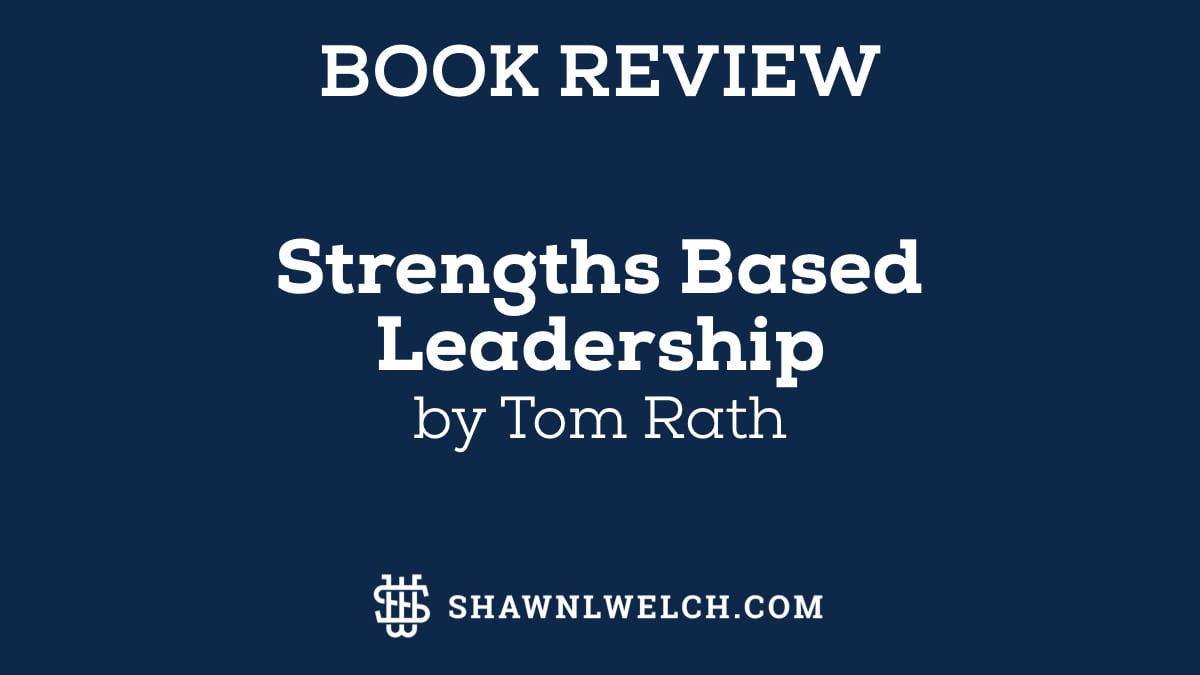As many of you know, I am trying to become more of an avid reader. Each year I have tried to increase the amount of books I read. This year my goal is 38 books.
Throughout the year, I am going to post a summary of a few of those books. My hope is that this summary will help you decide if this particular book is worth adding to your reading list and also provide some insight on some of the key points and nuggets of wisdom.
My first book summary of this year is Strengths Based Leadership: Great Leaders, Teams, and Why People Follow by Tom Rath.
Introduction
The most effective leaders:
-
- Are always investing in strengths
- Surround themselves with the right people and then maximize their team
- Understand their followers’ needs
Part 1: Investing In Your Strengths
- If you spend your life trying to be good at everything, you will never be great at anything.
- When Clifton was asked, just a few months before his death in 2003, what his greatest discovery was from three decades of leadership research, this was his response: “A leader needs to know his strengths as a carpenter knows his tools, or as a physician knows the instruments at her disposal. What great leaders have in common is that each truly knows his or her strengths—and can call on the right strength at the right time. This explains why there is no definitive list of characteristics that describes all leaders.”
Part 2: Maximizing Your Team
- The Four Domains of Leadership Strength
-
- Leaders with dominant strength in the Executing domain know how to make things happen
- Those who lead by Influencing help their team reach a much broader audience
- Those who lead through Relationship Building are the essential glue that holds a team together
- Leaders with great Strategic Thinking strengths are the ones who keep us all focused on what could be
-
- Mervyn Davies, Chairman, Standard Chartered Bank: “If you focus on people’s weaknesses, they lose confidence.”
- What high-performing teams have in common:
-
- Conflict doesn’t destroy strong teams because strong teams focus on results
- Strong teams prioritize what’s best for the organization and then move forward
- Members of strong teams are as committed to their personal lives as they are to their work
- Strong teams embrace diversity
- Strong teams are magnets for talent
-
Part 3: Understanding Why People Follow
- Warren Buffett: “A leader is someone who can get things done through other people.”
- The most influential leaders display these four qualities:
-
- Trust
- Compassion
- Stability
- Hope
-
- When Gallup studied the impact that leaders can have throughout an organization, the single most powerful question they asked employees was whether their company’s leadership made them feel “enthusiastic about the future.” Sixty-nine percent of employees who strongly agreed with this statement were engaged in their jobs, compared to a mere one percent of employees who disagreed or strongly disagreed. Based on this data, it appears that this may be the one area in which higher level leaders can have the most influence in their organization.
Conclusion: Leadership That Lasts Beyond a Lifetime
Leaders stay true to who they are—and then make sure they have the right people around them. Those who surround themselves with similar personalities will always be at a disadvantage in the long run to those who are secure enough in themselves to enlist partners with complementary strengths.
Game Plan
- Read the full book here (using our affiliate link)
- Which of the four Leadership Strength Domains are you strongest in? (Executing, Influencing, Relationship Building, Strategic Thinking)
- Out of the four key qualities of influential leaders (trust, compassion, stability, and hope), which one are you strongest in? Which one are you weakest in?


0 Comments